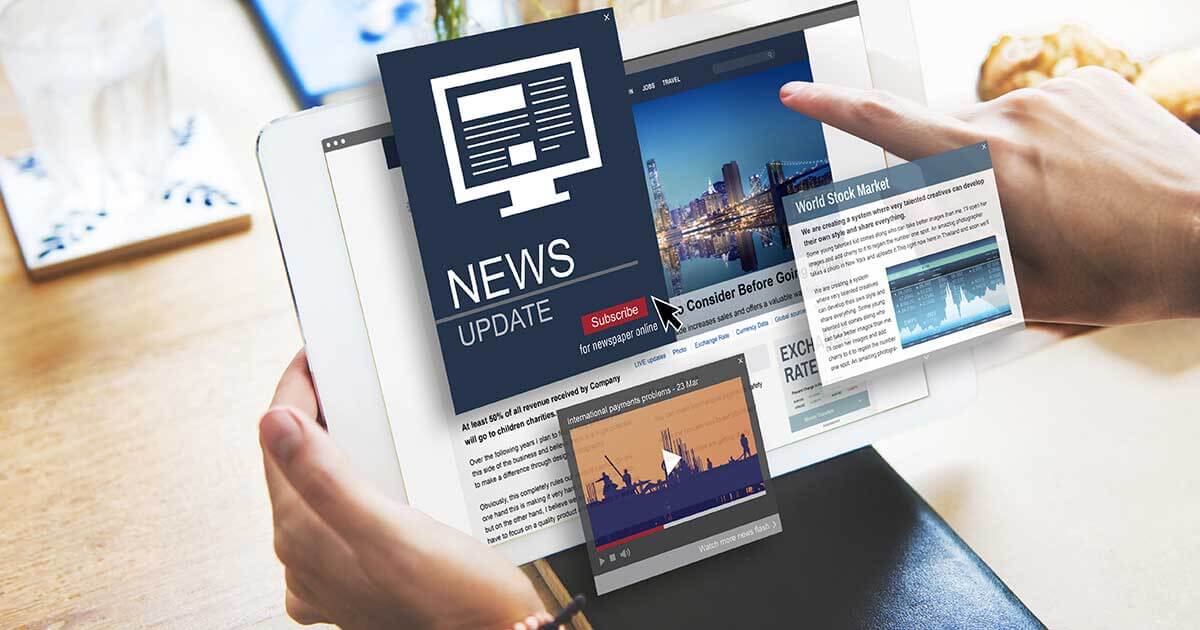Things about Popular News
Things about Popular News
Blog Article
Getting The Popular News To Work
Table of ContentsPopular News - TruthsThe Popular News StatementsSome Ideas on Popular News You Should KnowGet This Report about Popular News
Age is also an aspect in the means individuals check out the function of social media sites. More youthful social media news customers are more probable to state it has actually impacted their knowing right. About half of social media news customers ages 18 to 29 (48%) claim news on social media makes them far better educated, contrasted with 37% of those 30 to 49, 28% of those 50 to 64, and 27% of those 65 and older.Journalists weigh news worths when establishing whether or not to cover an event or news. Arguably the most essential component of newsworthiness is whether or not the information item being communicated influences an information electrical outlet's target market.
Proximity is crucial. Journalists have an interest in points that affect their communities. As an example, study on a state's new tax obligation code likely will not generate the same rate of interest across state borders. Periodically professionals can assist localize a larger national tale that affects greater than simply a city or state. In these situations, it is very important to be on the search for chances where subject professionals can provide insight or where comparable jobs might be occurring locally.
If you are publishing relevant study, loop in MarComm prior to the post being released so that the pitch can emphasize the latest element of the tale: the publication of the research study. Occasions and statements that include prominent numbers are most likely to generate media coverage. Brows through from national numbers usually require months of preparation due to expected community passion.
Some Known Details About Popular News
We can help reduce potential reputational danger with these stories while likewise increasing the chances of producing insurance coverage. While several of the above information values are interwoven, human passion stories usually stand apart.
Human interest elements can add news worth to other stories that might show up to be lacking in the various other worths. The uniqueness or strangeness of a circumstance can help influence whether a news electrical outlet is likely to cover a tale. While this is not an extensive checklist, inspecting to see if your story or occasion has these qualities before contacting us will help you determine which elements hold one of the most information worth.

Fascination About Popular News
There is also significant proof that even more consumers could start to pay for information in the futureif publishers can comprehend them and offer them well. Half of those who do not spend for news proactively seek information and resemble subscribers in numerous ways. And nearly 2 in 10 of those who do not sign up for information now show they are inclined to start to pay in the future.
We after that ask a collection of questions to identify whether individuals spend for particular kinds of news sources (Popular News). We asked people to name the resources they use most oftenwhether they spend for them or nothow they utilize them, the certain points they consider essential concerning them, and some related questions concerning the expense and value of that resource
People are attracted to news as a whole for two reasons above others: A desire to be informed people (newspaper customers particularly are highly motivated by this) and since the publication they subscribe to excels at covering certain subjects regarding which those customers specifically care. While there are a host of reasons, the No.
Even more than 4 in 10 likewise point out the fact that close friends and family members register for the exact same item (Popular News). Greater than a 3rd of people claim they initially subscribed in reaction to a discount rate or promo. In print, people also are relocated greatly to subscribe to obtain promo codes that conserve them money, something that has untapped ramifications in electronic
The Facts About Popular News Revealed
Regarding half are "information applicants," implying you could try this out they actively look for out information instead of mostly encountering it in an extra easy method, though the news that nonpayers are seeking (in the meantime, at least) is frequently regarding national politics. Like subscribers, a number of these people likewise obtain news numerous times a day, use the information in ways comparable to customers, and want similar subjects, including foreign or global news.

Of those that do pay, 54 percent subscribe to newspapers in print or digitally, which stands for 29 percent of Americans generally. The majority of them purchase a print publication together with their paper and spend for two to four news sources in total, some much more. And while 53 percent are veteran customers (5+ years), greater than a quarter (27 percent) have actually bought their paper membership within the previous year.
Couple of print customers think it likely they will certainly switch to a digital-only registration in the future, and majority of those who choose digital have actually never spent why not try these out for a print version of the exact same resource. Fully 75 percent of paper payers claim they primarily read the paper in print, while 21 percent are mostly digital users, and 4 percent describe themselves as equally divided.
Report this page